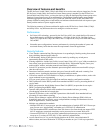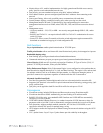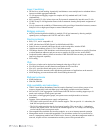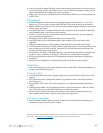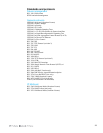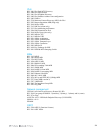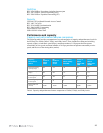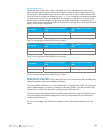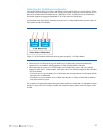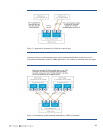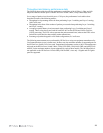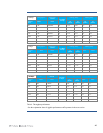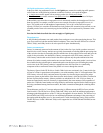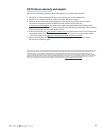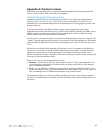
36
Per-port buffer sizes
The HP ProCurve Switch 5400zl, 3500yl, and 6200yl series have eight hardware queues to which
prioritized traffic can be assigned. Software can designate a certain amount of output memory buffer
for each queue to minimize the impact from events that exceed line rate such as bursty network traffic.
Users can choose to configure the number of queues—2, 4, or 8—so that they can optimize the amount
of memory buffer per queue for their applications. For example, if a user has only 2 priorities on the
network, that user should configure for 2 queues so that all the buffer memory is assigned to only 2
queues. The table below identifies the buffer sizes allocated on a per-port basis to the normal and other
priority queues in each configuration.
Port speed
Size of normal priority queue
(KB)
Size of other priority queues
(KB)
1 Gbps 194 KB (30%) 70 KB (10%)
10 Gbps 225 KB (30%) 77 KB (10%)
Table 7a. Per-port priority queue buffer sizes for 8 queues
Port speed
Size of normal priority queue
(KB)
Size of other priority queues
(KB)
1 Gbps 480 KB (70%) 68 KB (10%)
10 Gbps 538 KB (70%) 76 KB (10%)
Table 7b. Per-port priority queue buffer sizes for 4 queues
Port speed
Size of normal priority queue
(KB)
Size of other priority queues
(KB)
1 Gbps 618 KB (90%) 68 KB (10%)
10 Gbps 691 KB (90%) 76 KB (10%)
Table 7c. Per-port priority queue buffer sizes for 2 queues
Routing and forwarding tables
The HP ProCurve Switch 5400zl, 3500yl, and 6200yl series have several routing and forwarding table
features that enhance routing and switching performance.
Every line interface module has its own “best match prefix” routing table that contains IP routes and is
used for determining how to route the vast majority of incoming packets. Using the best match prefix
routing table is extremely fast and enables wire-speed routing to be achieved.
If the best match prefix routing table does not contain an entry that can be used to determine the route
of a received packet, then the main routing table is used. The main routing table can contain up to
10,000 routing table entries.
For Layer 2 forwarding, each switch has a forwarding or MAC table that can contain up to 65,536
entries.




